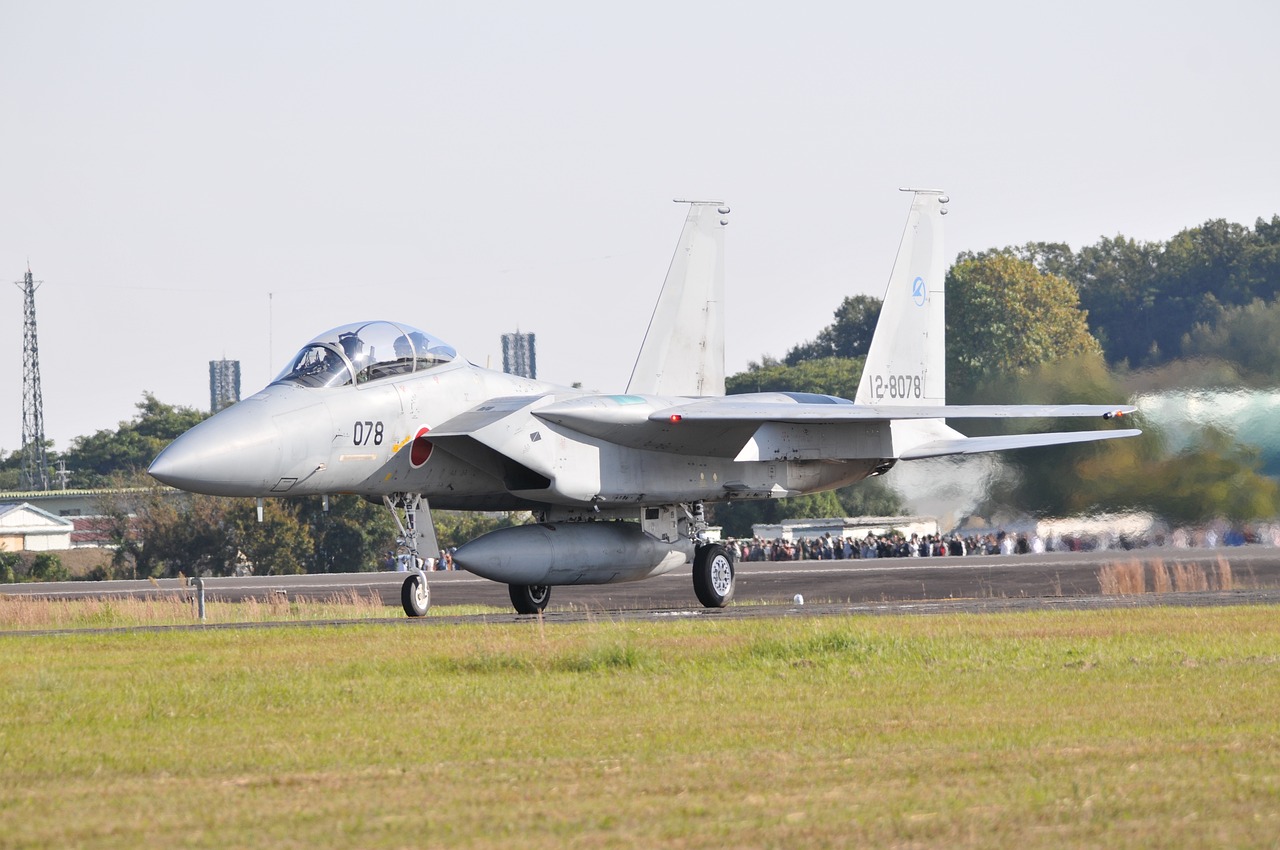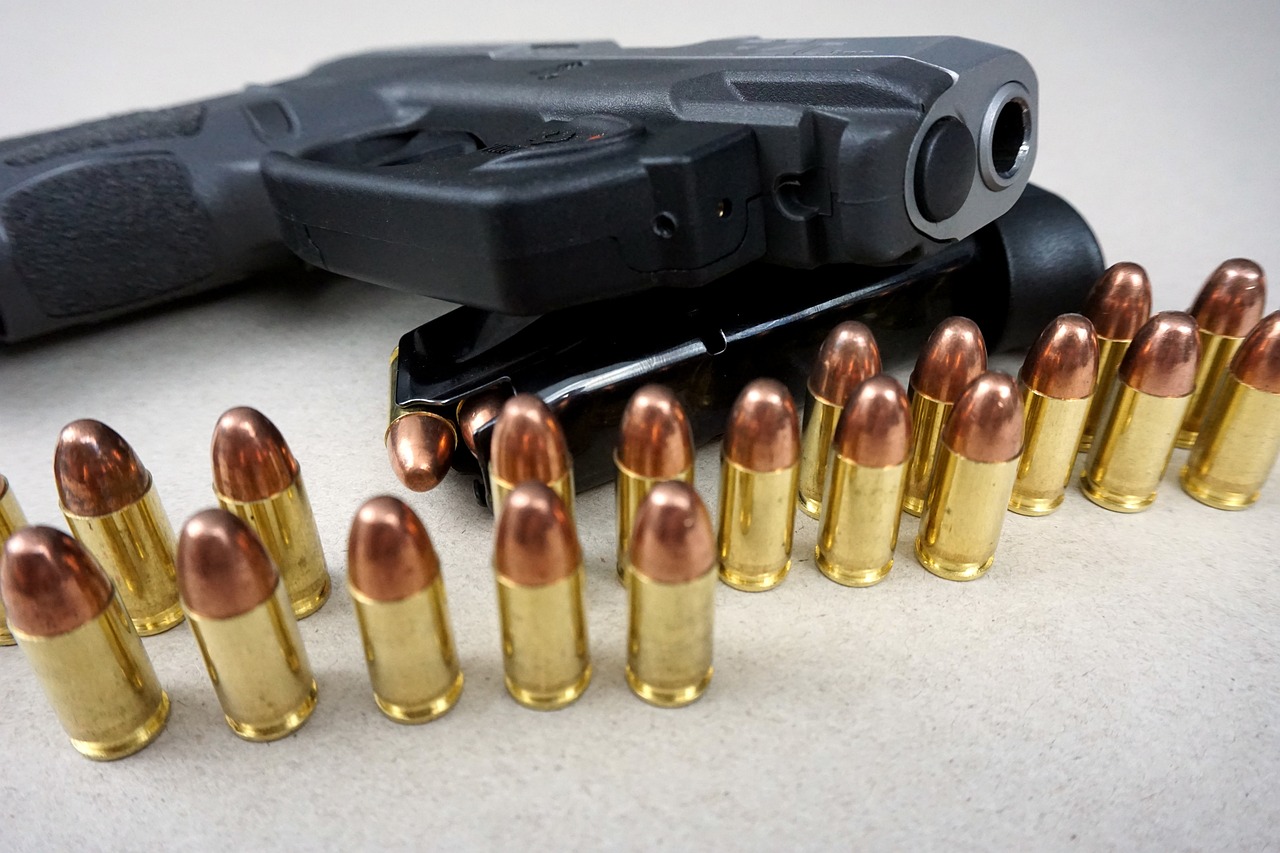Five Self-Defense Techniques You Can Use Against Larger Attackers
This article explores effective self-defense techniques designed for individuals facing larger attackers. Each technique emphasizes practical skills and strategies to enhance personal safety and confidence in challenging situations.
Recognizing the mindset of a larger attacker can help you anticipate their moves. It's essential to understand that many aggressors rely on intimidation and the element of surprise to gain the upper hand. They often believe that their size and strength will deter any resistance. By understanding their psychology, you can turn the tables in your favor. For instance, larger attackers may underestimate your ability to fight back, which can be your advantage. They might also exhibit signs of aggression, such as loud posturing or invading personal space, which can give you clues about their intentions. Maintaining awareness of these psychological tactics can aid in your self-defense strategy, allowing you to react swiftly and effectively.
The palm strike is a powerful and effective technique that targets vulnerable areas of an attacker’s body. Imagine a moment when you’re faced with an intimidating figure, and instead of cowering, you channel your energy into a focused strike. To execute a palm strike, raise your hand and use the base of your palm to hit the attacker’s nose or chin. This technique is advantageous against larger opponents because it allows you to use your body weight to generate force without needing to rely on strength alone. The goal is to create enough impact to disorient your attacker momentarily, giving you a chance to escape.
Using your knees can be an effective way to defend against larger attackers. When you find yourself in close proximity, a well-placed knee strike can hit sensitive areas like the groin or abdomen. To properly execute a knee strike, lift your knee sharply while thrusting your hips forward. This motion not only maximizes impact but also helps you maintain balance. If you can connect with your target, it can create an opportunity for you to break free from their grasp and make your escape. Remember, speed and precision are key!
Elbow strikes are close-range techniques that can deliver significant force. In a confrontation, your elbows are often more powerful than your fists due to their structure. To effectively use an elbow strike, aim for areas like the jaw, temple, or ribs. The proper form involves keeping your elbow high and driving it down or sideways into your target. This technique is especially useful when an attacker is right in your face, as it allows for quick, explosive movements that can catch them off guard. It’s a game-changer when you need to create space between you and a larger opponent.
Knowing how to escape from a hold is crucial when faced with a larger attacker. If someone grabs you, don’t panic! Instead, focus on regaining control. Techniques like the wrist escape or turning into the attacker can help you break free. For instance, if someone grabs your wrist, rotate your hand towards their thumb and pull away sharply. This maneuver takes advantage of the attacker’s grip weakness. Practicing these escape techniques regularly can make them second nature, allowing you to react instinctively in a high-pressure situation.
If taken to the ground, defending yourself against a larger attacker requires specific skills. Ground defense techniques such as the guard position or shrimping can help you protect yourself while looking for an escape route. For example, if you find yourself on the ground, use your legs to keep distance between you and your attacker while looking for an opportunity to get back on your feet. Remember, the ground can be a tricky place, but staying calm and using your body effectively can turn the tide in your favor.
Regular practice is essential for mastering self-defense techniques. It’s not just about knowing the moves; it’s about muscle memory and confidence. Joining a self-defense class or training with a partner can provide the necessary environment to hone your skills. Drills that simulate real-life scenarios can prepare you mentally and physically for an encounter. Consistency is key. The more you practice, the more instinctive your reactions will become, making you a formidable opponent, regardless of size.
Awareness is a critical component of self-defense. Staying vigilant can help you recognize potential threats before they escalate. Simple strategies, such as scanning your environment and being mindful of your surroundings, can empower you to react effectively. Think of it as being a hawk—always on the lookout. By being aware, you can avoid dangerous situations or prepare yourself mentally for an encounter. Remember, the best defense is often to avoid confrontation altogether.
- What if I have no prior self-defense training? - Don't worry! Many self-defense classes cater to beginners, and the techniques discussed can be learned quickly with practice.
- Are these techniques effective against all attackers? - While these techniques are designed to help against larger attackers, effectiveness can vary based on the situation and your ability to execute them.
- How often should I practice? - Regular practice, ideally once or twice a week, can help reinforce your skills and build confidence.
- Can self-defense techniques be used in any situation? - Self-defense techniques should only be used in situations where you feel threatened and need to protect yourself.

Understanding the Psychology of an Attacker
When it comes to self-defense, understanding the psychology of an attacker is just as crucial as mastering physical techniques. It's like playing chess; if you can anticipate your opponent's next move, you can position yourself for a win. Larger attackers often rely on intimidation and the assumption that their size gives them an advantage. They may feel emboldened by their physicality, believing that fear will paralyze their victims. Recognizing this mindset allows you to shift the power dynamic in your favor.
Many attackers use psychological tactics to manipulate their victims. For instance, they might engage in verbal taunts or threats, aiming to instill fear and confusion. This is where your mental fortitude comes into play. By staying calm and composed, you can disrupt their strategy. Instead of succumbing to fear, think of it as a game of poker—bluffing your way through the situation can buy you precious moments to escape or counter their aggression.
Moreover, understanding the common traits of aggressors can help you identify potential threats before they escalate. Here are some key psychological traits to consider:
- Confidence in Size: Many larger attackers believe their physical presence will intimidate their victims, often underestimating smaller individuals.
- Impulsiveness: Aggressors may act on impulse, driven by emotions like anger or frustration. This can lead to predictable patterns in their behavior.
- Desire for Control: Attackers often seek to dominate their victims, which can manifest in aggressive body language or positioning.
By recognizing these traits, you can better prepare yourself mentally. For instance, if you notice an attacker displaying impulsive behavior, you might choose to exploit their lack of control by making quick, decisive movements. Think of it as dancing; if you can lead the rhythm, you control the flow of the encounter.
Lastly, it's essential to remember that attackers are not invincible. Their confidence can be shattered with the right response. By understanding their psychology, you can turn the tables, using your knowledge to create openings for escape or defense. This mental preparation is just as vital as the physical techniques you'll learn. So, the next time you think about self-defense, remember that your mind is your most powerful weapon.

Technique 1: The Palm Strike
The palm strike is one of the most effective self-defense techniques you can learn, especially when faced with a larger attacker. Unlike punches that can risk injury to your knuckles, the palm strike allows you to deliver a powerful blow while minimizing the chance of self-harm. By using the base of your palm, you can target vulnerable areas such as the nose, chin, or throat, creating an opportunity for escape.
To execute a palm strike effectively, follow these steps:
- Position Yourself: Stand with your feet shoulder-width apart, knees slightly bent, and hands up in a defensive posture.
- Target the Attacker: Focus on vulnerable areas that can incapacitate or distract them momentarily.
- Strike with Force: Use the base of your palm, driving it forward with your hips and shoulders for added power.
One of the key advantages of the palm strike is its versatility. It can be delivered from various angles and distances, making it a reliable option in close combat situations. Additionally, because it utilizes the strength of your entire body rather than just your arm, it can generate significant force even if you’re not particularly strong.
Imagine being in a crowded area, and suddenly an aggressor approaches you. Instead of panicking, you remember the palm strike technique. You raise your hands in a defensive manner, and as they get closer, you swiftly aim for their nose with the base of your palm. The impact not only causes pain but also gives you a crucial moment to escape the situation. This is the power of the palm strike!
Moreover, practicing this technique regularly can enhance your muscle memory, allowing you to react instinctively in high-pressure situations. Whether you are in a self-defense class or practicing with a friend, the more you train, the more confident you will become in your ability to defend yourself.
In summary, the palm strike is a straightforward yet highly effective technique that can help individuals of all sizes defend themselves against larger attackers. By focusing on vulnerable targets and using your body’s natural strength, you can create a significant advantage and increase your chances of escaping a dangerous situation.

Technique 2: The Knee Strike
The knee strike is one of those techniques that packs a punch—literally! When faced with a larger attacker, utilizing your knees can turn the tables in a heartbeat. Imagine you’re cornered, and your opponent is towering over you, thinking they have the upper hand. Well, with a well-timed knee strike, you can deliver a powerful blow to vulnerable areas, such as the groin or abdomen, creating an opportunity for escape.
Executing a knee strike is not just about brute force; it’s about precision and timing. Here’s how to do it effectively:
- Get in Position: Stand with your feet shoulder-width apart, knees slightly bent. This stance gives you a solid base to pivot and strike.
- Target Selection: Aim for sensitive areas on your attacker’s body. The groin is a prime target, but you can also aim for the stomach or ribs, depending on your position.
- Drive Upward: As you lift your knee, think of it as driving your knee upward with force. You want to make contact with the attacker’s body, not just tap them.
- Follow Through: After the strike, be ready to pivot or move away quickly. The goal is to create space and escape, not to engage further.
One of the beauties of the knee strike is its versatility. You can use it in various scenarios—whether you're standing or even if you're on the ground. When you’re on the ground, a knee strike can be executed while you’re seated or on your back, targeting your assailant’s midsection. This adaptability makes it a valuable addition to your self-defense toolkit.
Now, let’s talk about the advantages of the knee strike against larger opponents. First and foremost, it allows you to utilize your body weight effectively. When you lift your knee, you’re not just using muscle; you’re leveraging your entire body to generate power. This is crucial when facing someone who may outweigh you significantly. Additionally, the knee strike is a quick motion, which means it can catch your attacker off-guard, giving you the element of surprise.
In practice, you might find it helpful to visualize the knee strike in action. Picture a scenario where you’re being grabbed from behind. Instead of panicking, you can use your strength and agility to drive your knee back into your assailant’s groin. This sudden movement can create a moment of shock, allowing you to escape and regain control of the situation.
However, it’s important to remember that practice makes perfect. Regularly practicing knee strikes in a controlled environment, such as a self-defense class or with a training partner, can enhance your confidence and technique. The more comfortable you become with the motion, the more instinctive it will be in a real-life scenario.
In conclusion, the knee strike is a potent self-defense technique that can help level the playing field against larger attackers. By focusing on precision, timing, and practice, you can empower yourself to react decisively when it matters most. Remember, it’s not just about the size of your opponent; it’s about how you use your skills to protect yourself and escape from danger.

Technique 3: The Elbow Strike
The elbow strike is one of the most effective self-defense techniques, especially when you're faced with a larger attacker. Why, you ask? Well, think about it: your elbows are some of the strongest joints in your body, and they can generate a lot of power in a short distance. When you're in close quarters with an aggressor, using your elbow can be a game-changer. This technique is not only simple to execute, but it also allows you to target vulnerable areas of your attacker's body, such as the face, ribs, or solar plexus.
To perform an elbow strike effectively, you need to understand the mechanics involved. Start by positioning yourself so that you are facing your attacker. As they approach, you want to keep your hands up in a defensive posture. When the moment is right, pivot your body slightly to generate momentum and drive your elbow towards your target. Whether you aim for the jaw or the side of the ribs, the key is to strike with enough force to incapacitate or at least distract your opponent for a split second, giving you the opportunity to escape.
Here are some important points to remember when executing an elbow strike:
- Target Areas: Aim for soft spots like the nose, chin, or ribs.
- Body Position: Keep your feet shoulder-width apart for balance.
- Follow Through: Don’t just stop at the point of contact; allow your elbow to follow through to maximize impact.
One of the greatest advantages of the elbow strike is its versatility. You can use it in various scenarios, whether you're standing or even on the ground. In close-range situations, where your opponent's size may seem intimidating, the elbow strike allows you to turn the tables quickly. Imagine being cornered and feeling the panic rise; with a well-timed elbow strike, you can shift the momentum in your favor in an instant.
Moreover, practicing this technique can significantly boost your confidence. As you become more familiar with the motion and the impact it can deliver, you'll feel more empowered in your ability to defend yourself. Regular training not only hones your skills but also helps you internalize the movements so that they become second nature. Consider incorporating elbow strikes into your self-defense drills, and don’t hesitate to seek a training partner to practice with.
In summary, the elbow strike is a powerful self-defense technique that can be a lifesaver when faced with a larger attacker. Its effectiveness lies in its simplicity, strength, and ability to target vulnerable areas. So next time you're thinking about self-defense, remember the elbow strike—it could very well be your ticket to safety!

Technique 4: The Escape Maneuver
When faced with a larger attacker, one of the most critical skills you can develop is the ability to escape from holds or grips. The escape maneuver is not just about physical strength; it's about using your body effectively and understanding your opponent's weaknesses. Imagine being trapped in a bear hug or a wrist grab—your instinct might be to panic, but with the right techniques, you can turn the tables and regain your freedom.
The first step in executing an effective escape maneuver is to remain calm. Panic can cloud your judgment and slow your reactions. Instead, take a deep breath and assess the situation. Here are some key points to consider when attempting an escape:
- Identify the hold: Understanding how your attacker is holding you is crucial. Are they gripping your wrist, or have they locked you in a bear hug? Each scenario requires a different approach.
- Utilize your body weight: Leverage your body weight to create force against your attacker. For example, if you're in a bear hug, lean forward to shift their center of gravity.
- Target vulnerable areas: If possible, use your elbows or knees to strike sensitive areas like the ribs or groin. This can create a moment of distraction, giving you the chance to break free.
Now, let’s break down a couple of common escape techniques:
If your attacker has you in a bear hug from behind, here’s a simple yet effective maneuver:
- Bend your knees slightly and lower your center of gravity. - Use your elbows to strike backward into their ribs or stomach. - As they loosen their grip, twist your body to the side and step out of their hold.
In the case of a wrist grab, follow these steps:
- Rotate your wrist towards the thumb of your attacker, as this is the weakest point of their grip. - Simultaneously, step back and use your body weight to pull your arm away. - If they hold on tight, you can use your free hand to strike their face or throat to create an opening.
Practicing these maneuvers regularly will help you develop muscle memory, making it easier to react instinctively in a real-life situation. Remember, the goal is not just to escape but to create an opportunity to get to safety. Your safety is paramount, so never underestimate the power of a well-executed escape maneuver.
Q: What should I do if I can't escape immediately?
A: If escape isn't possible right away, focus on creating distractions. Use your voice to draw attention or make sudden movements to catch your attacker off guard.
Q: How can I practice these techniques safely?
A: Partner with a friend or enroll in a self-defense class where trained instructors can guide you through the techniques safely and effectively.
Q: Are there any specific self-defense classes you recommend?
A: Look for classes in Krav Maga, Brazilian Jiu-Jitsu, or Muay Thai, as these disciplines often emphasize practical self-defense techniques against larger opponents.

Technique 5: The Ground Defense
When it comes to self-defense, the ground can be a tricky place, especially if your opponent is larger than you. But don't let that intimidate you! Understanding ground defense techniques can significantly enhance your chances of escaping a dangerous situation. Imagine being in a wrestling match where your opponent has the upper hand; the key is to turn the tables and regain control. Ground defense isn’t just about brute strength; it’s about technique, leverage, and quick thinking.
First and foremost, it’s essential to remain calm and focused when you find yourself on the ground. Panic can cloud your judgment and hinder your ability to react effectively. Instead, take a deep breath and assess your surroundings. Are there any potential escape routes? Is your attacker off-balance? These questions can guide your next move. One effective strategy is to create distance between yourself and the attacker. Use your legs to push against their hips or shoulders, creating space to maneuver.
Next, let’s talk about some specific techniques that can help you defend yourself on the ground:
- Guard Position: This is your first line of defense. Keeping your knees up and your feet on the ground can protect your vital areas while allowing you to react quickly. From here, you can either defend against incoming strikes or look for an opportunity to escape.
- Hip Escape: Also known as the shrimping technique, this move involves using your hips to create space. By pushing your hips away from your attacker while simultaneously moving your shoulders in the opposite direction, you can escape from underneath them.
- Submission Holds: If the opportunity presents itself, applying a submission hold can incapacitate your attacker. Techniques like the armbar or triangle choke can be effective, but they require practice to execute correctly.
Now, you might be wondering, “How do I practice these techniques effectively?” The answer lies in finding a training partner or enrolling in a self-defense class. Regular practice will not only improve your skills but also boost your confidence in handling real-life situations. Remember, the more comfortable you are with these techniques, the better prepared you will be if you ever find yourself in a dangerous scenario.
In conclusion, ground defense techniques are invaluable tools in your self-defense arsenal. By mastering these skills, you can turn a potentially dangerous situation into an opportunity for escape. Always keep in mind that the goal of self-defense is not to engage but to escape to safety. So, stay aware, practice regularly, and empower yourself to handle any situation that comes your way!
Here are some common questions you might have about ground defense techniques:
- Can anyone learn ground defense techniques? Absolutely! Ground defense techniques are designed for people of all skill levels. With practice, anyone can learn to defend themselves effectively.
- How long does it take to become proficient in ground defense? Proficiency varies by individual, but consistent practice over weeks or months can lead to significant improvement.
- Are there specific self-defense classes focused on ground techniques? Yes, many martial arts and self-defense classes offer specialized training in ground defense. Look for classes that emphasize grappling or Brazilian Jiu-Jitsu.

Practicing Self-Defense Techniques
When it comes to self-defense, practice makes perfect. Just like learning to play an instrument or mastering a sport, honing your self-defense skills requires consistent effort and dedication. Imagine trying to play a guitar without ever practicing; it would be a struggle, right? The same principle applies here. Regular practice not only helps you remember the techniques but also builds muscle memory, allowing you to react instinctively in stressful situations.
One of the best ways to practice is by finding a reliable training partner. Training with someone else allows you to simulate real-life scenarios, making your practice sessions more effective. You can take turns being the attacker and the defender, which helps both parties understand the dynamics of an encounter. Additionally, working with a partner can provide valuable feedback on your technique, enabling you to make necessary adjustments. Consider joining a local self-defense class or martial arts dojo, where you can learn from experienced instructors and meet like-minded individuals.
Moreover, it's essential to incorporate various drills into your practice routine. For instance, you can set up drills that focus on specific techniques, such as the palm strike or knee strike. Here's a simple table to illustrate some effective drills you might consider:
| Drill | Description | Focus |
|---|---|---|
| Shadow Fighting | Practice techniques in front of a mirror without a partner. | Form and technique |
| Controlled Sparring | Engage in light sparring with a partner to practice techniques. | Realistic application |
| Reaction Drills | Have a partner randomly attack while you respond with self-defense techniques. | Instinctive reactions |
In addition to physical practice, mental preparation is equally important. Visualize yourself successfully executing self-defense techniques in various scenarios. This mental rehearsal can significantly boost your confidence and readiness. Just like athletes visualize their performance before a big game, you can do the same to prepare for potential confrontations.
Lastly, don't forget the importance of staying fit. A strong body can enhance your self-defense capabilities. Incorporate strength training, flexibility exercises, and cardiovascular workouts into your routine. Not only will this improve your performance in self-defense situations, but it will also contribute to your overall well-being.
- How often should I practice self-defense techniques? Aim to practice at least once a week, but more frequent sessions can lead to faster improvement.
- Can I practice self-defense techniques alone? While practicing with a partner is beneficial, you can also practice techniques alone using shadow fighting or drills that don’t require a partner.
- What should I focus on during practice? Focus on mastering the fundamentals of each technique, building muscle memory, and improving your reaction time.
- Are there specific exercises to improve my self-defense skills? Yes! Incorporate strength training, agility drills, and flexibility exercises into your routine to enhance your performance.

Staying Aware and Prepared
When it comes to self-defense, the old saying "an ounce of prevention is worth a pound of cure" couldn't be more accurate. Staying aware and prepared is your first line of defense against potential threats. Imagine walking down a street, and instead of being lost in your thoughts or glued to your phone, you’re fully present, scanning your environment like a hawk. This proactive mindset can make all the difference. But how do you cultivate this awareness?
First and foremost, developing a keen sense of your surroundings is essential. This means not just looking at the people around you, but also noticing the details—like the layout of the area, potential escape routes, and any unusual behavior. It’s like being in a movie where you’re the hero, always on the lookout for the next plot twist. By training yourself to notice these elements, you can anticipate and react to situations before they escalate.
One effective way to enhance your awareness is through the practice of mindfulness. This doesn’t just mean meditation; it’s about being engaged in the moment. For instance, when you’re out in public, try to consciously observe the environment. Are there any exits nearby? What do the people around you look like? Are there any signs of trouble? By asking yourself these questions, you’re not only preparing your mind but also conditioning your instincts to alert you when something feels off.
Additionally, consider participating in self-defense workshops or classes that focus on situational awareness. These sessions often include practical exercises that simulate real-life scenarios, helping you to practice your reactions in a controlled environment. It’s like a dress rehearsal for a play; you get to work out the kinks before the curtain goes up. Plus, you’ll likely meet others who share your interest in personal safety, which can be a great source of support and motivation.
Another key aspect of staying prepared is understanding the importance of personal safety tools. Carrying items like pepper spray, a personal alarm, or even a tactical flashlight can provide an added layer of security. However, it’s crucial to remember that these tools are just that—tools. They should complement your awareness and self-defense skills, not replace them. Think of them as the icing on the cake; they enhance your overall strategy but aren’t the main ingredient.
Lastly, always trust your instincts. If something feels wrong, it probably is. Just like in a suspenseful thriller, where the protagonist senses danger before the audience does, you have an innate ability to detect threats. Don’t ignore that gut feeling; it’s your body’s way of keeping you safe. By staying aware and prepared, you’re not just enhancing your self-defense skills; you’re empowering yourself to navigate the world with confidence and assurance.
| Question | Answer |
|---|---|
| What should I do if I feel threatened? | Trust your instincts and seek a safe place. If possible, call for help or alert authorities. |
| How can I practice awareness in daily life? | Engage in mindfulness exercises, observe your surroundings, and participate in self-defense training. |
| Are self-defense tools effective? | Yes, but they should be used in conjunction with self-defense knowledge and situational awareness. |
| Can self-defense skills be learned at any age? | Absolutely! Self-defense techniques can be adapted for individuals of all ages and fitness levels. |
Frequently Asked Questions
- What is the most effective self-defense technique against a larger attacker?
The most effective technique often depends on the situation, but the palm strike is widely regarded as one of the best options. It targets vulnerable areas like the nose or chin, delivering a powerful blow that can create an opportunity to escape.
- How can I practice self-defense techniques safely?
Practicing with a partner in a controlled environment is key. Always ensure that both of you are aware of your limits and use protective gear if necessary. Consider joining a self-defense class where you can learn under professional supervision.
- Is it necessary to be physically strong to defend myself?
No, self-defense is more about technique and strategy than brute strength. Techniques like the knee strike and elbow strike leverage your body's natural mechanics to generate force, making them effective even against larger opponents.
- What should I do if I find myself in a dangerous situation?
Stay calm and assess the situation. Use your awareness skills to identify potential escape routes. If you must defend yourself, remember to employ the techniques you've practiced, like the escape maneuver or ground defense, to get away safely.
- How often should I practice self-defense techniques?
Regular practice is crucial for muscle memory. Aim for at least once a week, but more frequent drills will help you feel more confident and prepared. Consistency is key to mastering your skills!
- Can self-defense techniques be effective for anyone?
Absolutely! Self-defense techniques can be adapted to fit individuals of all sizes and strengths. The goal is to empower everyone with the skills and confidence to protect themselves, regardless of physical attributes.
- What role does awareness play in self-defense?
Awareness is your first line of defense. By staying vigilant and recognizing potential threats before they escalate, you can avoid dangerous situations altogether. It’s like having a sixth sense that keeps you one step ahead!



















